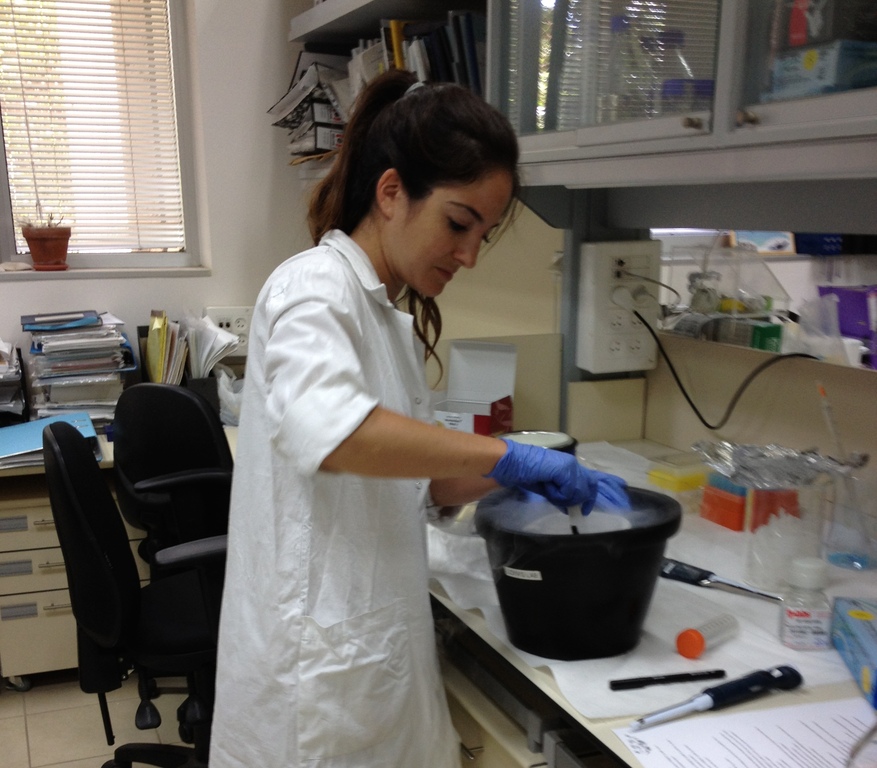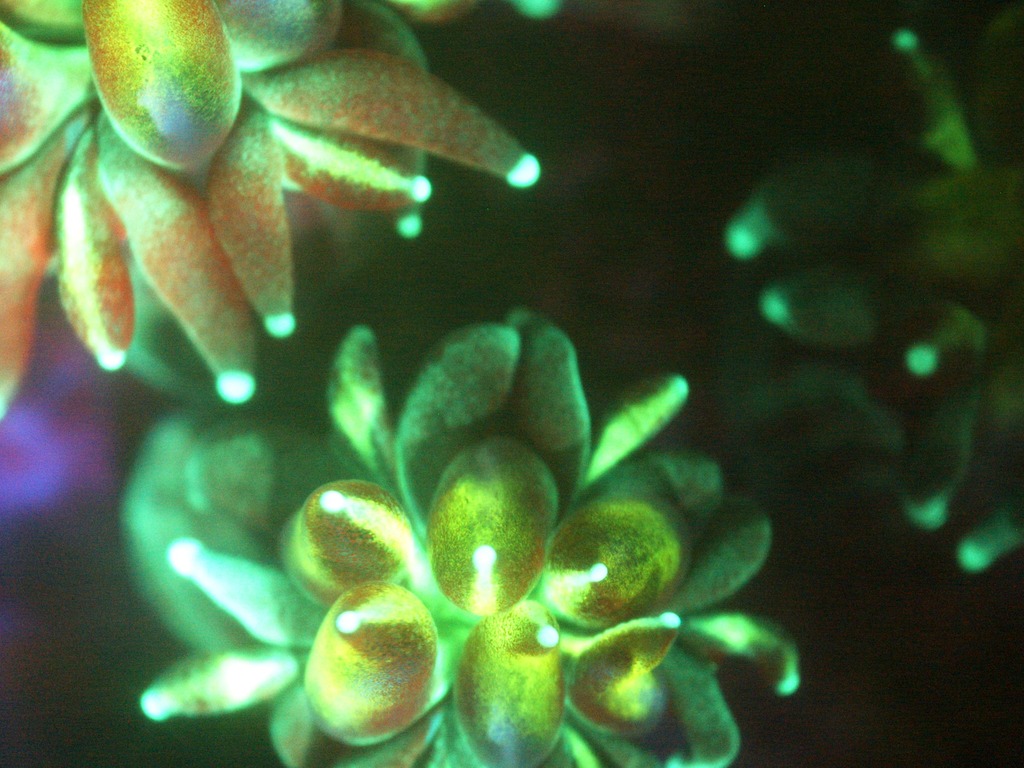Behind the science:
Light-dependent fluorescence in the coral Galaxea fascicularis
2017, October 2
Posted by Veronica Radice
Fields
Ecology
Physiology
Focusgroups
Scleractinia (Hard Corals)
Symbiodinium (zooxanthellae)
Locations
Israel - Red Sea
“Light-dependent fluorescence in coral”
What was the most challenging aspect of your study (can be anything from field, lab to analysis)?
Whoever is working on coral fluorescence knows how tricky it can be. Identification and quantification can be difficult. But challenges are welcome and the field of marine fluorescence is exciting enough to make me keep on going.
What was the most memorable moment in undertaking this study?
My first night dive with fluorescence gear. I was diving regularly back then, but night diving wasn’t my favorite. The first time you get into the water and see the corals glow is a mind blowing moment. I didn’t expect so many of the corals to be so bright and colorful.
What was your favorite research site in this study and why?
My favorite research site is actually a room, the dark room. The place I see the samples glow. Every time I get a new sample I was anxious to get there, image the coral and discover its fluorescence pattern. While sometimes it ended with a disappointment because the coral was not fluorescent at all, other times it was surprisingly colorful.
Other than your co-authors, with whom would you like to share credit for this work?
My lab mates from Yossi Loya’s lab in Tel Aviv University who had to hear me talking about coral fluorescence over and over, and the Interuniversity Institute for marine sciences in Eilat for hosting this experiment.
Any important lessons learned (through mistakes, experience or methodological advances)?
Sometimes we rely blindly on previous studies and we are afraid to try new techniques that might cost us with time or money. So did I, but since then, I got the chance to apply newer methods that sometimes came from a completely different field of researches and I’m thankful for the opportunities and knowledge I gathered since this work was published.
Can we expect any follow-up on this work?
As part of my ongoing research in Yossi Loya’s lab, I am still investigating the relationship between fluorescence and light so yes indeed.
Featured article:
|
|
Light-dependent fluorescence in the coral Galaxea fascicularis | article Ben-Zvi O, Eyal G, Loya Y (2015) Hydrobiologia 759:15-26 |
|


